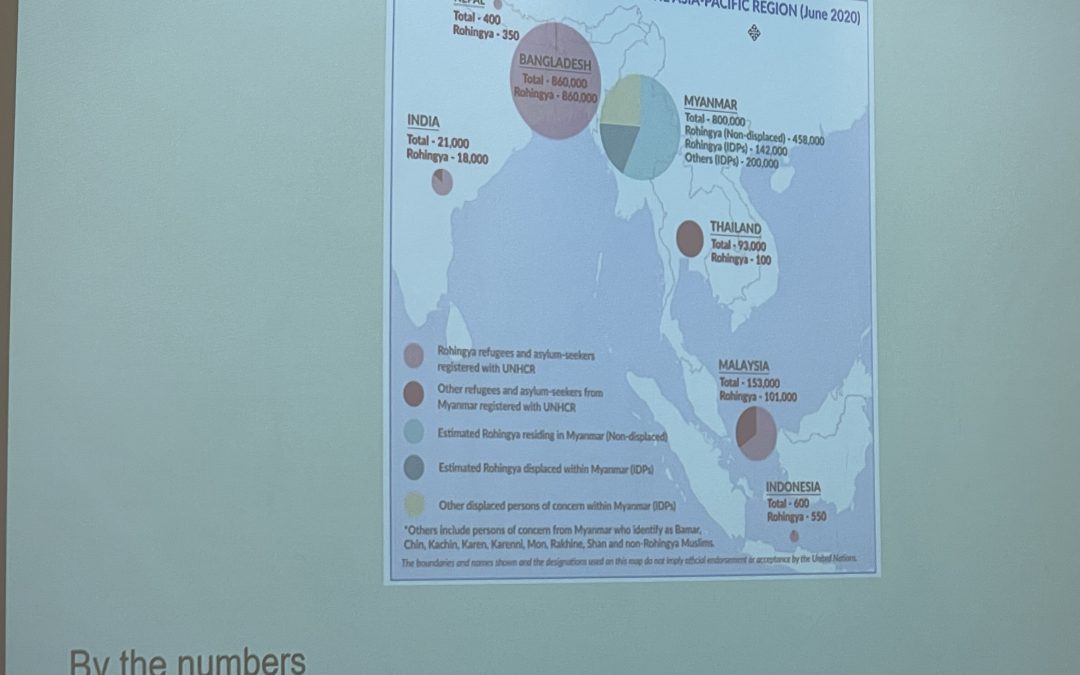Myanmar has never quite managed to make its affairs stick around the global stage long enough to gain momentum. Given its checkered history since being released from British imperialistic rule, it’s almost too easy to overlook the unrest that plagues the country, but what is really going on in Myanmar… I mean really?
Myanmar, previously named Burma, was released from British rule in 1948; this happened concurrently with other British efforts to remove ties to Southeast Asia, such as the partition of India and Pakistan. Even before the struggle to rise as an independent, established country, race riots were present. All the way back to 1930, during the Great Depression, a fight broke out between Indian dockworkers and Burman laborers, known as the Rangoon Riots. This is just one of many racial conflicts in Myanmar.
Myanmar is extremely diverse, with over 100 recognized ethnic groups.

Ethnic Burmans, who hold the majority, are more privileged than other groups and usually hold a majority of military and government positions. Many of the smaller ethnic groups suffer from discrimination, minimal representation, and systemic oppression, leading to systemic poverty and a lack of economic opportunities. These tensions and divisions are rooted in Britain’s treatment of Myanmar when it was a colony. In order to prevent a successful rebellion against the British government, Britain often fostered hostilities between these groups, so they couldn’t come together as a united front against British rule. As a result, these groups formed their own militias that continue to fight for their individual autonomy to this day.
For a period of time after gaining independence from Britain, the country enjoyed relatively steady growth. Economically, the country continued to rise and tensions continued at the same level without increasing. However, in 1962, a military junta took over the government. This led to the complete downfall of Myanmar. What once was a growing independent country plummeted into poverty because of the isolationist tendencies of the military regime, and ethnic tensions were exacerbated as the military government repressed ethnic minorities’ rights and used brutal tactics to raze villages and towns to the ground. In 1967, anti-Chinese riots broke out with the flood of Chinese immigrants escaping the Cultural Revolution. Tensions between all groups have remained constant. In terms of politics, the government stripped people of their freedoms, and even shut down schools at points in time to prevent the assembly of democratic rallies. The ID of every citizen has a label for their ethnicity. If you’re lucky and have some Burman blood, you should check off “Burmese.”
Perhaps the most persecuted of the ethnic minorities are the Rohingya Muslims who aren’t even recognized as an official minority in Myanmar. Myanmar’s religious majority is Buddhism and the rise in Buddhist nationalists has triggered waves of violence against the Rohingya populations, pushing these people to flee and seek asylum. The Buddhist nationalists see the Rohingya Muslims as foreign invaders and as a threat to national security as they flooded into Myanmar during British rule, although the more obvious label for their acts are clearly examples of ethnic cleansing. Populations of Indians and Muslims that arrived in Myanmar were seen as connected to the British and the rising nationalist movement against British colonization incited hostilities. The nationalist movement believed to be first colonized by the British and now by Indians.
While the military regime had been characterized by brutalities against ethnicities and the oppression of human rights, in 2011 when Myanmar began to shift away from military rule, the newfound freedom of speech and press actually facilitated the rise of recent Buddhist nationalism. As authoritarian controls were lifted, more and more people started to speak up, advocating nationalist narratives against the Rohingya people. In 2015, tens of thousands of Rohingya people were displaced from their homes. Given the recent 2021 coup in Myanmar which resulted in the reinstatement of a military regime, internal unrest that plagues Myanmar is nowhere near close to a resolution, whether that be ethnic tensions or the political landscape.
Since the onset of the Russia-Ukraine War, public support offering help to displaced Ukrainians is at an all-time high, but the same type of support was not witnessed during the peak of the 2015 Rohingya refugee crisis. From the sheer difference in publicity of the two events to rising anti-Muslim sentiment, Myanmar has been largely ignored on the global stage, their problems deemed domestic and off-limits for international intervention.


Recent Comments